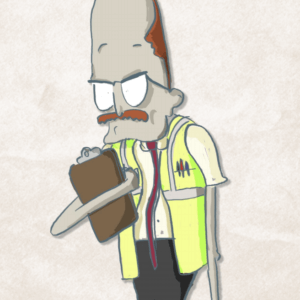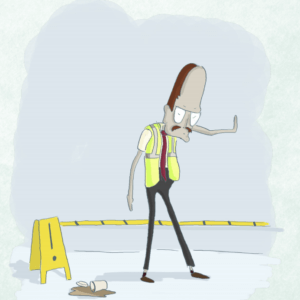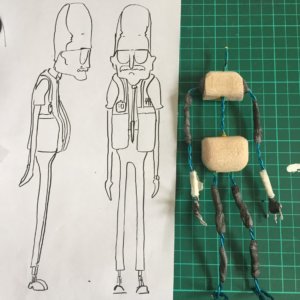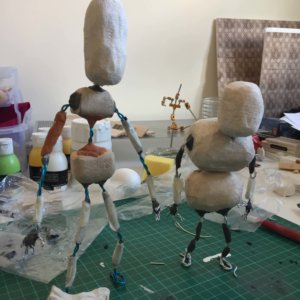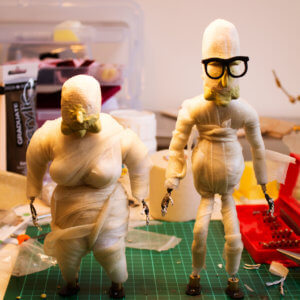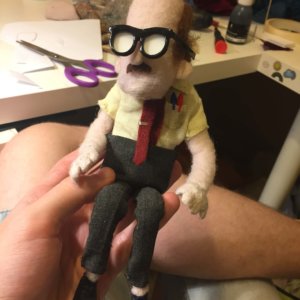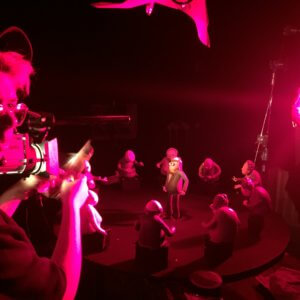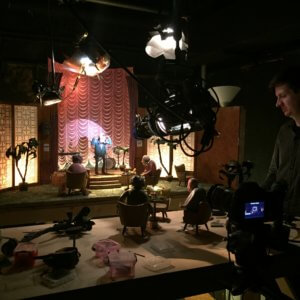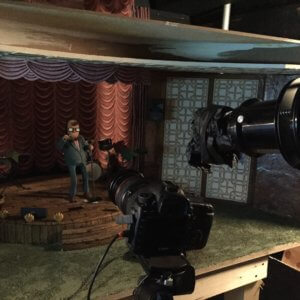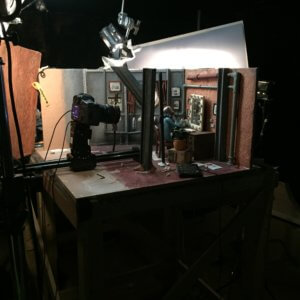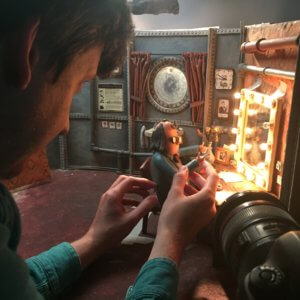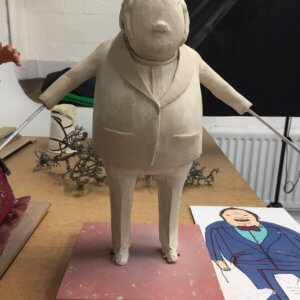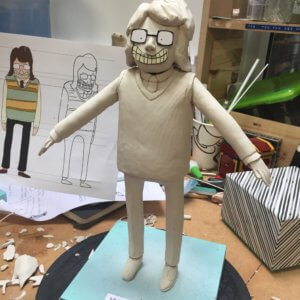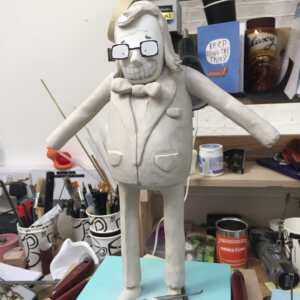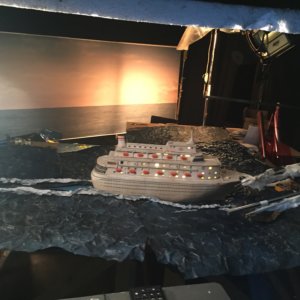Cabin Pressure – An Interview With NFTS Graduate Matthew Lee
Cabin Pressure is the latest short released by Matthew Lee, who this year graduates from the National Film and Television School. The hilarious short tells the tale of Graham, a terrible fusspot and Cynthia who sits on the opposite end of the scale to our hero as they encounter a touch of turbulence and inhibitions run wild. The film has been screened at over 30 international festivals winning awards at Manchester Animation Festival, The Smalls Film Festival and Neum Animated Film Festival. Whilst Cabin Pressure is not his graduation short, the film displays all the talent and timing of a filmmaker who entered higher education after a stint in the working world and some previous success on the festival circuit.
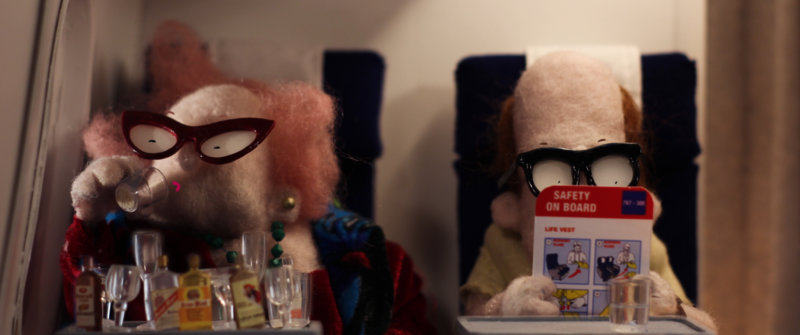
Previous employed at Jellyfish where he won a News and Documentary Emmy award for Outstanding Graphic Design and Art Direction on Your Inner Fish in 2015, Lee also has success with his short film Bad Advice which screened at Encounters where he saw NFTS alumni Nina Gantz’s film Edmond and decided to apply to the directing for animation course to dedicate some time to the craft of filmmaking to escape the mundanity of motion graphics.
With his graduation film One Liner about to be released onto the festival circuit and with Cabin Pressure released online, we caught up with Matthew to find out more about his time at the NFTS and his plans for the future.
Though it looks like a graduation film Cabin Pressure isn’t. Could you let us know about the module you were assigned and how the film came to be?
Cabin Pressure came about during my first year at the NFTS. The module known simply as “Project Two” is basically an exercise where we were asked to create a character of our own. Writers from the screenwriting course are also asked to create a character and then we were randomly paired.
The brief was then to create an animation where the two characters meet and interact within a single setting – and I think there was some rule that they had to make physical contact at some point? Other than that though we were left to our own devices – we could choose whatever medium of animation we wanted and do whatever we liked story wise – staying within an extremely modest budget and time constraints – I think the entire module ran for something like 2 1/2 months.
How did the module lead to the creation of the characters in the film and the scenario?
My character “Graham Penge” started life as a health and safety officer who got occasional unexplained compulsions to start fires. I really enjoyed the exercise of coming up with a character of my own – at one point I wrote a whole back story for Graham. I seem to remember he got married in a hi-vis jacket, keeping the aisle clear at all times so as not to obstruct any emergency exits. My writer, Karim Khan’s character was Cynthia, a glamorous former Hollywood child star whos fame had faded and was now on the run from her former life, having jilted her third husband at the altar.
I think the scenario came about as I was trying to figure out where these two very different characters might possibly meet. A public place made sense and at first I think it was going to be an airport departure lounge, Cynthia on the run from her wedding and Graham most probably on his way back from a health and safety conference. But then the idea of being on a plane just seemed too perfect – combining Graham’s highly strung nature with a mid-flight catastrophe.
I think at first I was really unsure how to play these characters off each other, but after a while it made perfect sense – Cynthia was impulsive and extravagant – a perfect foil for the straight laced and uptight Graham. The more uptight I made Graham the more fun I had thinking of what kind of obnoxious things Cynthia could do that would wind him up!
As we had free reign to animate in whatever medium we liked, I decided very early on that I wanted to have a go at stop motion. After years of being stuck behind a computer screen I wanted to have a go at learning something completely new and doing something practical. I’d actually never done stop motion before, the first time I’d ever even attempted it at that point was as part of the selection workshop to get onto the course itself. But the school was very encouraging and although my tutor told me later he was a little bit sceptical at first, once he saw the felt puppets I made he felt like I’d made the right choice.
One Liner is your latest film, borrowing from the word of northern comics and cruise ship acts, how did the idea develop?
I suppose everything started with the main character Ian Plinth, I loved this idea of a has-been failed comedian trying to make it big again. I’ve always loved comedy and some of my favourite comedies come with a sense of pathos and tragedy, and a failed comedian trapped on a cruise ship seemed so perfect for this.
The dynamic of the double act also really interested me, especially comedy acts that have worked together for a long time through good times and especially bad. Whilst a lot has been said before about the creme de la creme such as Morcambe and Wise or Laurel and Hardy, I have a soft spot for some of the more rubbish old variety acts, especially Little and Large. I’ve watched my fair share of old clips of them on YouTube as research and some of it is excruciatingly bad – but fascinatingly so! And you can see there’s a real tension between them on screen which bubbles through to the surface.
The film also brings together a few of my favourite themes. I’m a bit obsessed by the rubbish and the naff, especially tied into Britishness. Having spent many an evening being dragged to the local Labour Club by my parents and having to endure a night of bingo and beige buffets I have a real nostalgia and affection for this world. I was also taken on a Norweigan cruise more recently by my parents on a rather ageing cruise liner and that was sort of fascinating. The boat itself felt like it hadn’t changed since the 70s, and neither had the acts by the sound of it – and it pretty much rained for the entire week
Once I had settled on the initial set of characters and setting the story itself took a long time to develop and went through many different iterations. I really put myself and my tutors through agony trying to get the story working how I wanted it before allowing myself to move on with production. Although it was painful I’m glad that I did as I think it improved with each version and became clearer and clearer.
How did you find taking the leap from Motion Graphics to Stop Motion Animation?
Coming from a digital background and making the leap to Stop Motion was a little bit daunting at first. I felt for the first time in ages my animation skills would be put to the test without having the safety net of keyframes and undo-ing that 3D animation affords. Despite the trepidation though I feIt got into the swing of things quite quickly. It definitely helped that by chance with Cabin Pressure I picked a scenario where the characters are seated for the majority of the film! Even so, I think what the experience showed me was how universally those fundamental rules of animation translate between different disciplines. I felt as long as I always kept those in mind then I could make it work for me. In the long run this had made me much less worried about leaping between different types of animation in general.I would also say that because of the nature of the straight ahead animation that comes with stop motion, it really forces you to be a lot more disciplined and make every bit of animation count as you really don’t want to have to re-do things. Because of that I think my animation actually improved compared to the animation I did before. I will also say though that knowing After Effects well was also an absolute lifesaver as you will be surprised how much can be fixed or faked after the fact!
There seems to be a link between NFTS grad films – mental anguish and manifestations of such, why do you think that is?
Haha – that’s a really interesting observation and one I hadn’t thought about. Well I suppose the course does push you to the limit mentally at points, so that could be a subconscious side effect!
From a personal perspective, all the films I’ve made have touched on these themes. For me, animation is the perfect medium for exploring states of mental anguish and making real and physical the internal. I can be quite reserved and shy in every day life so the idea of using animation as a medium where I can control and communicate inner thoughts and anxieties and express myself in this way is pretty much the reason I do this. I think it comes as not surprise that a lot of other animators have explored and have been attracted by these qualities too. I’m also quite an anxious person so it sort of came naturally that animation would be a by-product of these anxieties!
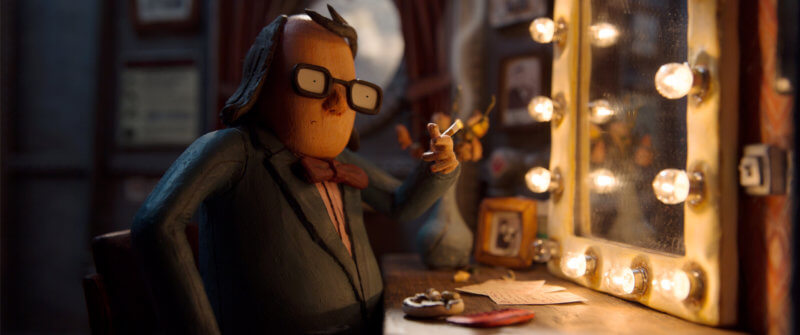
What has your overall experience been like at the NFTS?
The NFTS experience has been great. At times it can be exhausting and hard, and really does put you through your paces – but it does kind of force you to push yourself out of your comfort zone, which can be a hugely rewarding thing.
I don’t think there’s any other equivalent course of it’s kind that has such an emphasis on collaboration. You really do get to direct a team of talented people who are all specialising in their own fields, from Cinematography to Production Design, to Editing, Sound Design and Composition. We were also the first year to benefit from the schools new model making course, the students on which made the foam latex puppets in One Liner, which was a really fascinating process to see.
Finally the tutors are great and really do have a lot of time and support to offer you if you want it. Particularly our head of department Robert Bradbrook who was super supportive and always did a good job of challenging our ideas and pushing them further, whilst trying his best to understand and respect what we were trying to say with our films and not destroy them in the process.
What’s next for Matthew Lee?
We will see! One Liner had it’s first public showing at the NFTS graduation screening last month and now that’s out of the way it’s heading for the festival circuit, where I hope it will enjoy some of the same success as Cabin Pressure did. Also after almost vowing to pretty much never make another film again after the stress of the grad film making process I think I’m finally starting to get itch once again – so I want to start developing something new very soon. Watch this space!
If you’d like to know more about the work of Matthew Lee you can follow him on Twitter or visit his website.


